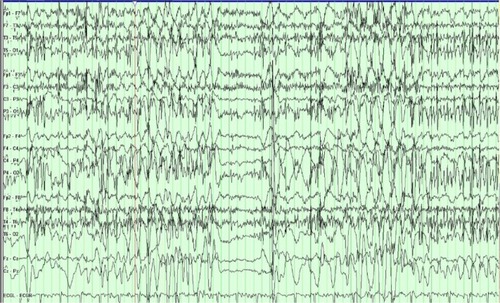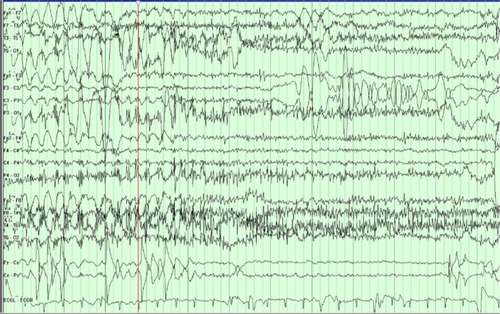Figures & data
Table 1 Differences in semiology and timing between PNES and epileptic seizures
Figure 1 The PT transitions into a typical PNES.
Abbreviations: PT, patient; PNES, psychogenic nonepileptic seizure; EEG, electroencephalogram.

Figure 2 The patient is in the middle of a typical PNES.
Abbreviations: PNES, psychogenic nonepileptic seizure; EEG, electroencephalogram.

Figure 3 The patient transitions out of a typical PNES.
Abbreviations: PNES, psychogenic nonepileptic seizure; EEG, electroencephalogram.

